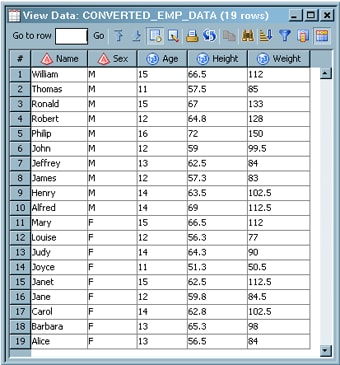Adding a User Written Code Transformation to a Job
Problem
You want
to add user-written code to a job. One method is to use the User Written
Code transformation that is provided in Transformations tree. After
you place this transformation in a job, you can add user-written code
on the Code tab of its properties window
and map its columns to the target table. This approach works particularly
well with jobs that need quick custom code or that require only one
input and output and no parameters. More complicated situations are
handled more effectively with the Transformation Generator wizard.
Solution
Tasks
Create and Populate the Job
-
Because you want a permanent target table to contain the output for the transformation, right-click the temporary work table that is attached to the transformation and click Replace in the pop-up menu. Then, use the Table Selector window to select the target table for the job. The target table must be registered in SAS Data Integration Studio. For more information about temporary work tables, see Working with Default Temporary Output Tables.
Add User-Written Code to the User Written Code Transformation and Map Columns
Perform
the following steps to add user-written code to the User Written Code
transformation in a job:
-
Write SAS code and test it to ensure that it produces the required output. The following code was written for the sample job:
data &_OUTPUT; set &SYSLAST; length sex $1; if gender = "Male" then sex = "M"; else if gender = "Female" then sex = "F"; else sex="U"; run;In this case, the code changes the gender identification in the Gender column from the words Male and Female to the initials M and F. -
Click Save or Save As on the toolbar for the tab. The Save option enables you to save the code in the editor as a metadata object (instead of saving the code into a file). The Save As option opens the Save File window, where you can either save a name and description for the metadata object (code in the editor) or save the contents of the editor as a file.
-
Note: When SAS Data Integration Studio generates all of the code for a job, it can automatically generate the metadata for column mappings between sources and targets. However, when you specify user-written code for part of a job, you must manually define the column metadata for that part of the job that the user-written code handles. SAS Data Integration Studio needs this metadata to generate the code for the part of the job that comes after the User Written Code transformation. This mapping is also needed for impact analysis.

